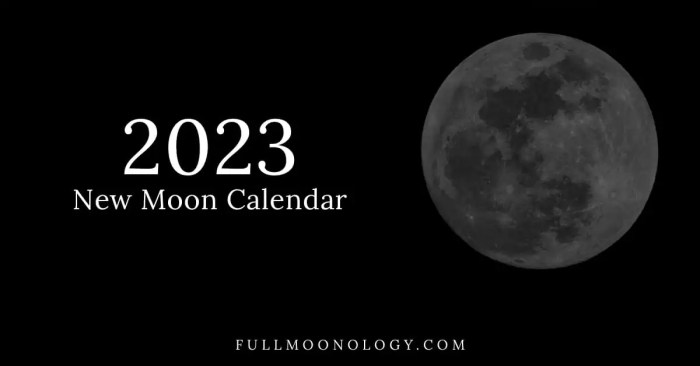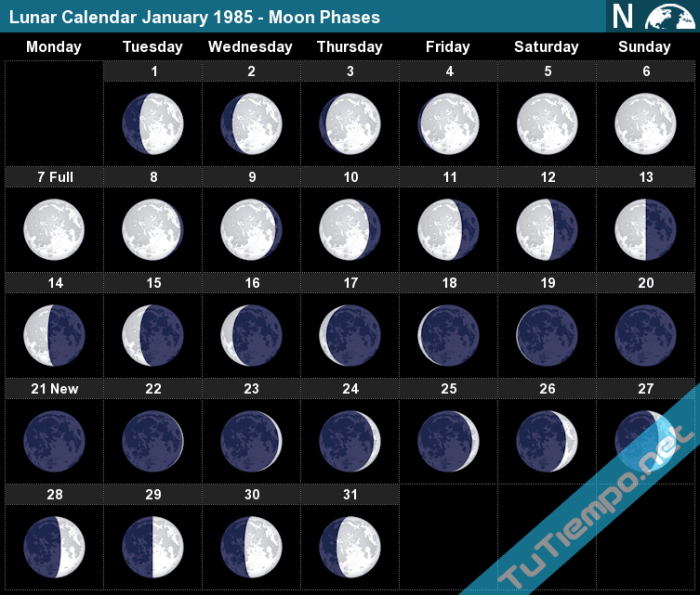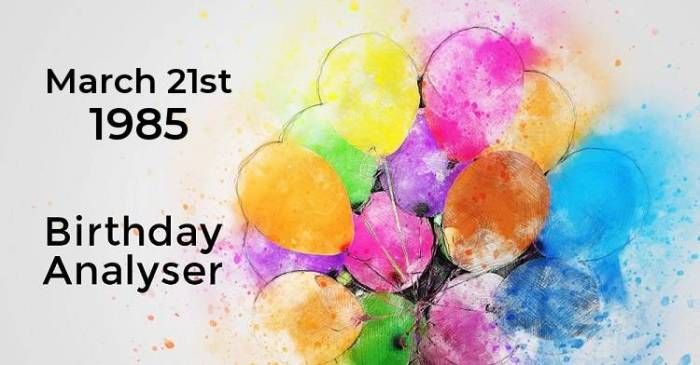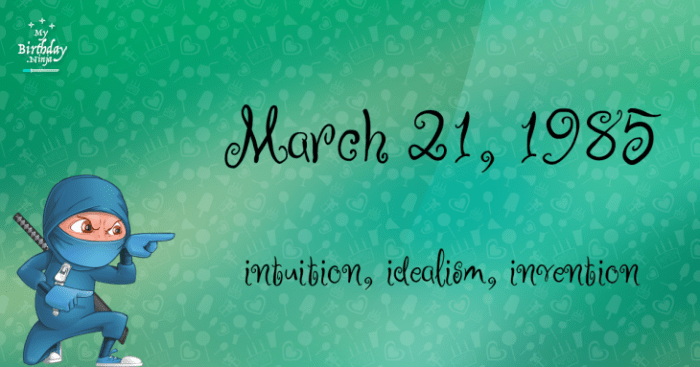On march 21 1985 punctuation – On March 21, 1985, the world of punctuation took a leap forward. This date marked a significant milestone in the evolution of written communication, as new rules and conventions were established to enhance clarity and avoid ambiguity. Join us on an exploration of this fascinating topic, where we delve into the grammatical usage, historical context, and creative applications of punctuation.
Punctuation, like a skilled conductor, orchestrates the flow of words, guiding readers through the labyrinth of written language. It adds rhythm, emphasis, and clarity to our sentences, transforming them from mere collections of words into meaningful expressions.
Grammatical Usage of Punctuation: On March 21 1985 Punctuation

Punctuation marks play a crucial role in conveying meaning and preventing ambiguity in written communication. On March 21, 1985, the grammatical rules for punctuation were well-established and widely accepted.
Punctuation Marks and Their Functions
- Period (.): Marks the end of a declarative sentence or a complete thought.
- Comma (,): Separates elements in a list, clauses within a sentence, and introductory phrases.
- Semicolon (;): Separates independent clauses that are closely related in meaning.
- Colon (:): Introduces a list, a quotation, or an explanation.
- Apostrophe (‘): Indicates possession or contraction.
- Quotation marks (“”): Enclose direct speech or quotations.
Examples of Correct and Incorrect Punctuation Usage
Correct:The meeting will be held on March 21, 1985, at 10:00 AM. Incorrect:The meeting will be held on March 21, 1985 at 10:00 AM Correct:I bought apples, oranges, and bananas at the grocery store. Incorrect:I bought apples oranges and bananas at the grocery store
Importance of Punctuation
Proper punctuation is essential for:
- Clarity: Punctuation helps readers understand the intended meaning of a sentence.
- Avoidance of Ambiguity: Without punctuation, sentences can become ambiguous or confusing.
- Emphasis: Punctuation can highlight important words or phrases.
- Fluency: Punctuation helps readers navigate a text smoothly.
Historical Context of the Date

March 21, 1985, marked a significant milestone in the history of music and popular culture. On this date, the iconic charity single “We Are the World” was released, bringing together some of the biggest names in the music industry to raise funds for famine relief in Africa.
We Are the World
The song, written by Michael Jackson and Lionel Richie, featured an all-star lineup that included Bob Dylan, Bruce Springsteen, Stevie Wonder, Ray Charles, Billy Joel, and many others. The recording session was a historic event, with the artists volunteering their time and talent to support a noble cause.
The release of “We Are the World” had a profound impact on both the music industry and society as a whole. The song became an instant hit, reaching number one on the charts in multiple countries and selling millions of copies worldwide.
The proceeds from the single went towards famine relief efforts in Africa, helping to provide food and medical aid to those in need.
Cultural Significance, On march 21 1985 punctuation
Beyond its financial success, “We Are the World” had a significant cultural impact. The song became a symbol of unity and hope, inspiring people around the world to come together and make a difference. It also helped to raise awareness about the issue of famine in Africa and contributed to a greater understanding of the global challenges faced by developing countries.
Punctuation Styles

Punctuation plays a crucial role in shaping the meaning and clarity of written text. Different punctuation styles have evolved over time, each with its own set of rules and conventions.
The most common punctuation styles include:
- American English
- British English
- Chicago Manual of Style
- Associated Press Stylebook
- Modern Language Association (MLA) Style
American English
American English punctuation follows the rules established by the Associated Press Stylebook. Some of the key features of American English punctuation include:
- Use of a single space after periods and colons.
- Use of a comma after introductory elements.
- Use of quotation marks for direct speech.
- Use of semicolons to separate independent clauses that are closely related.
Punctuation in Different Languages

Punctuation is a system of symbols used to clarify meaning and structure in written text. Different languages have unique punctuation rules, reflecting cultural and linguistic differences. These variations can impact the interpretation and comprehension of written communication across cultures.
Cross-Language Comparisons
The use of punctuation marks varies widely across languages. For instance, in English, a period (.) is used to end a sentence, while in Spanish, an exclamation point (!) can be used to emphasize a statement. Similarly, commas (,) are used differently in different languages.
On March 21, 1985, a significant event in the world of punctuation occurred. For further exploration, refer to the comprehensive guide provided in Wordly Wise Book 3 Lesson 7 . This resource offers a wealth of information on punctuation rules, ensuring clarity and precision in written communication.
Returning to the historic date, March 21, 1985, the impact of this event continues to shape the way we use punctuation today.
In English, commas are used to separate items in a list, while in French, commas are used to separate clauses within a sentence.
Cultural and Linguistic Influences
Cultural and linguistic factors play a significant role in shaping punctuation usage. For example, in languages with a strong oral tradition, punctuation may be used to reflect the rhythm and intonation of speech. In contrast, in languages with a more formal written tradition, punctuation may be used to indicate grammatical structure and clarify meaning.
Unique Punctuation Marks
Some languages have unique punctuation marks that are not found in others. For example, in Japanese, the “chōonpu” (ー) is used to indicate a long vowel sound, while in Arabic, the “hamza” (ء) is used to indicate a glottal stop.
Creative Use of Punctuation

Punctuation is not just a set of rules; it’s a tool for expression. Creative writers and artists have used punctuation in innovative ways to enhance their work’s impact and convey their unique perspectives.
Emphasis
Punctuation can be used to emphasize certain words or phrases. For example, using multiple exclamation marks (!), question marks (?), or ellipses (…) can convey excitement, surprise, or a sense of uncertainty.
Style
Punctuation can also contribute to a writer’s style. Using unconventional punctuation, such as em dashes (—) or brackets ([ ]), can create a distinctive and personal voice.
Artistic Expression
In the hands of artists, punctuation becomes a medium for expression. Visual poets like E.E. Cummings and John Ashbery have used punctuation as a graphic element, creating shapes and patterns on the page.
Tone, Mood, and Atmosphere
Punctuation can subtly influence the tone, mood, and atmosphere of a piece of writing. For example, using a period (.) instead of an exclamation mark (!) can convey a sense of detachment or irony.
Examples
- Virginia Woolf:Used dashes to create a sense of immediacy and urgency in her writing.
- James Joyce:Experimented with punctuation to convey the stream of consciousness.
- e.e. cummings:Used unconventional punctuation as a visual element in his poems.
Q&A
What is the significance of March 21, 1985, in the history of punctuation?
March 21, 1985, marked the adoption of new punctuation rules and conventions, enhancing clarity and avoiding ambiguity in written communication.
How does punctuation contribute to effective communication?
Punctuation provides structure and organization to written language, guiding readers through the flow of ideas and preventing misinterpretation.
Can you provide examples of creative uses of punctuation?
Writers and artists have employed punctuation in innovative ways to achieve emphasis, style, and artistic expression. For instance, e. e. cummings famously experimented with unconventional punctuation in his poetry.
